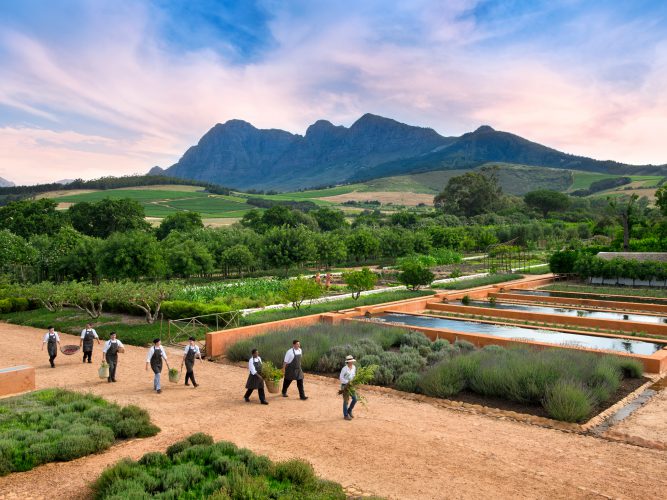Today is a most auspicious day in history: 364 years ago, the first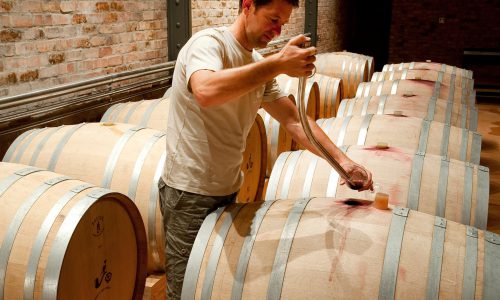 South African grape wine harvest began. On 2 February 1659, Jan van Riebeeck recorded in his diary: “Today, praise be to God, wine was made for the first time from Cape grapes.” What started almost three centuries ago in the Constantia Valley of Cape Town, has grown to the point where today, over 2500 farmers cultivate approximately 225,000 acres of land under vines.
South African grape wine harvest began. On 2 February 1659, Jan van Riebeeck recorded in his diary: “Today, praise be to God, wine was made for the first time from Cape grapes.” What started almost three centuries ago in the Constantia Valley of Cape Town, has grown to the point where today, over 2500 farmers cultivate approximately 225,000 acres of land under vines.
By some astonishing good fortune, “I’m from Stellenbosch”, the second settlement to be established for the purpose of supplying fresh provisions for the sailors on their long journeys between Europe and the East. Years ago, at one of our ubiquitous festivals of food or wine or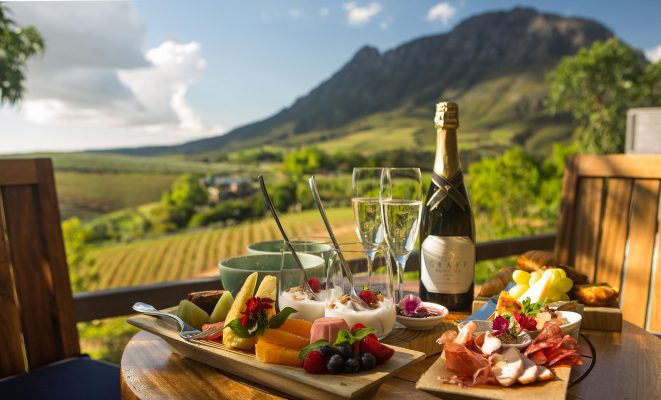 music, books or art, the master of ceremonies observed that, as much as he believed our Creator had no faults, we have to concede that “someone went a little overboard” with shaping this valley. Of course, I concur, and of course, I love nothing more than arranging a peek at my hometown for my clients whenever possible. We have been combining a classic food walking tour and a wine safari to create A Perfect Introduction to the Cape Winelands for many years, but we continually need to allow more time for endless new developments.
music, books or art, the master of ceremonies observed that, as much as he believed our Creator had no faults, we have to concede that “someone went a little overboard” with shaping this valley. Of course, I concur, and of course, I love nothing more than arranging a peek at my hometown for my clients whenever possible. We have been combining a classic food walking tour and a wine safari to create A Perfect Introduction to the Cape Winelands for many years, but we continually need to allow more time for endless new developments.
Babylonstoren, for instance, is our town’s answer to the famous Blue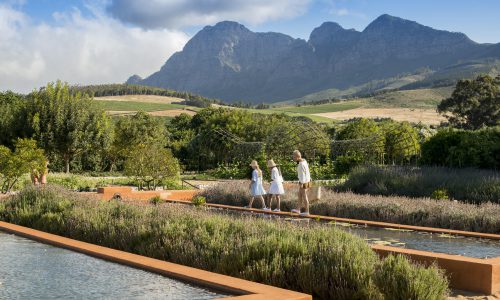 Hill at Stone Barns of the Hudson Valley. The historic Cape Dutch farm features a magnificent garden laid meticulously out over 8 acres where on daily walking tours, visitors are encouraged to pick, taste, smell and touch their way through everything from vegetables, herbs and fruit to succulents, vinegars and olives. A beautiful tasting room showcases the estate’s award-winning wines beside decadent platters of artisanal bread, handcrafted cheese, smoked meats, chutneys, preserves and relishes. Three different farm-to-fork restaurants offer something for every mood and occasion, and some old farm buildings have been renovated into a hotel with beautiful farmhouse suites, swimming pools and of course, a unique garden spa.
Hill at Stone Barns of the Hudson Valley. The historic Cape Dutch farm features a magnificent garden laid meticulously out over 8 acres where on daily walking tours, visitors are encouraged to pick, taste, smell and touch their way through everything from vegetables, herbs and fruit to succulents, vinegars and olives. A beautiful tasting room showcases the estate’s award-winning wines beside decadent platters of artisanal bread, handcrafted cheese, smoked meats, chutneys, preserves and relishes. Three different farm-to-fork restaurants offer something for every mood and occasion, and some old farm buildings have been renovated into a hotel with beautiful farmhouse suites, swimming pools and of course, a unique garden spa.
The Dylan Lewis Sculpture Garden is a garden of private myth, in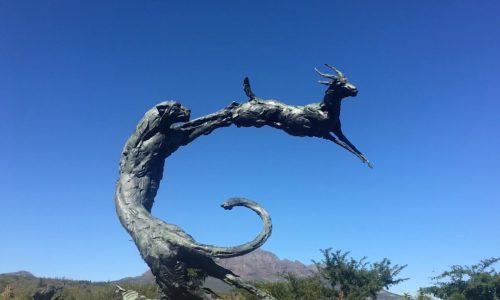 which the world-renowned artist explores the Jungian notion of ‘the wilderness within’. More than 60 sculptures have been carefully positioned along three miles of paths to constitute a record of his artistic development so far. It originated in 2009 when Lewis hired an excavator to create a level play area for his children behind their house on the farm, and speaking of “going overboard”, began creating what would become an 18-acre sculpture garden. My iPhone spontaneously created this compendium of images taken on a lovely afternoon spent exploring the art, the space and the mind of such a great talent.
which the world-renowned artist explores the Jungian notion of ‘the wilderness within’. More than 60 sculptures have been carefully positioned along three miles of paths to constitute a record of his artistic development so far. It originated in 2009 when Lewis hired an excavator to create a level play area for his children behind their house on the farm, and speaking of “going overboard”, began creating what would become an 18-acre sculpture garden. My iPhone spontaneously created this compendium of images taken on a lovely afternoon spent exploring the art, the space and the mind of such a great talent.
What I love most about Stellenbosch though, is that in spite of all the historic acclaim and tourist attention, the streets are alive with “regular locals” young and old going, just going about their business, and in this beautiful and vibrant hub of creativity, gastronomy, culture and innovation I also get to discover and explore something new, every time I visit.
